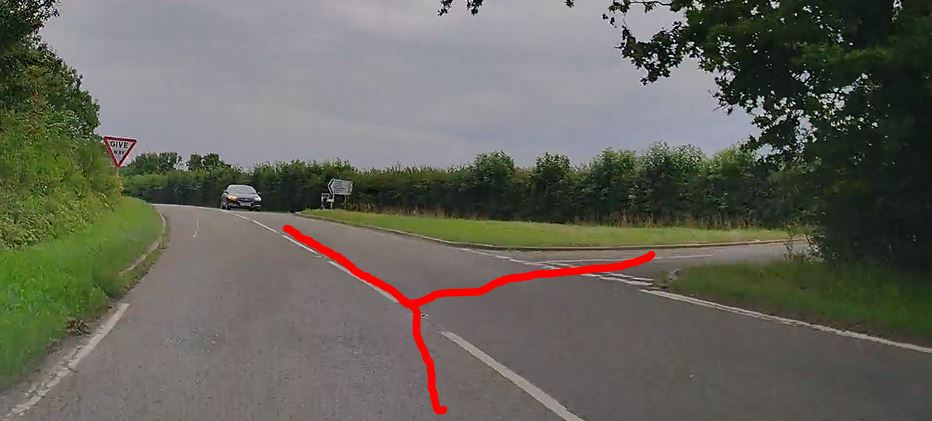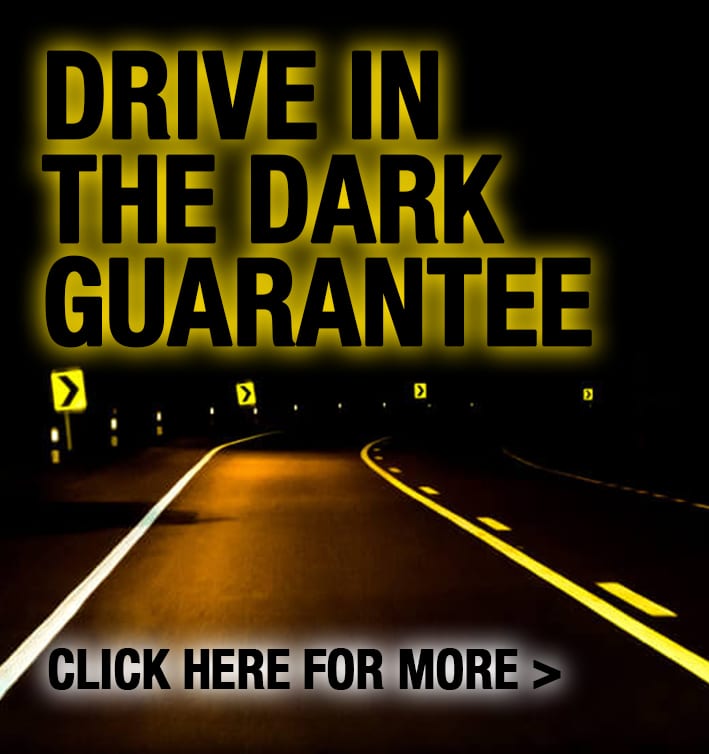This blog explains with the use of the video clip what Y junctions look like and why they exist.

As you can see from the image here, Y junctions do look like a capital Y when viewed from the minor road – just as T junctions look like a capital T.
They exist to try to help drivers navigate with ease in the direction needed, in effect using a Y junction means that there is less steering required. They also help to minimise congestion on thin minor roads, by helping drivers to use the appropriate ‘leg’ of the junction for the direction they wish to travel.
In the first clip you can see the car is in the major road and it turns right into the junction with relative ease and not a great deal of steering. Contrast that with the second clip where the car is using the right leg of the junction to effectively emerge right on to the major road. See how the driver has to give way at two points, firstly giving way to the oncoming vehicle (we are turning right so we give way to oncoming traffic), and then there is a second pause at the give way markings to ensure it is safe to emerge right in to the major road. Just as a note, while using the right sided leg of the Y junction to help emerging right, it would not be illegal to emerge right using the left leg – it would be more difficult, but not illegal.
The third clip shows a turning to the left from the major road on to the Y junction, look how tight and narrow that left turn is. Note how slowly the vehicle is moving while it turns into that narrow left turn. Also note how there is another give way marking to pay attention to, as you will see traffic whizzing past at speed from the right that has just come off the major road (as per the first clip). As you can see, paying attention to white markings on Y junctions is important.
The last clip shows the vehicle travelling into the Y junction from the minor road and emerging left on to the major road. This particular junction is notorious for collisions as sat nav’s do not show that left emerge as an actual junction – they tend to think that is a straight road. There is you will notice a triangular warning sign for the give way (the only triangular sign that is upside down) on the approach, but if you were making the mistake of solely relying on sat nav and not noticing warning signs, you could easily find yourself emerging left when there could be traffic coming from your right on the major road. The moral of the story being to not rely too heavily on tech in the car, and continue to pay attention to road signs and road markings.
In summary, Y junctions exist to try to help us as drivers, the idea being to plan in advance which leg of the junction you will need to use for the emerge or turn that you are making. But, as ever, being a static hazard, there is an increased risk associated with them. We can observe in these clips the combination of traffic from many directions entering the junction at speed – not a great combination for road safety. This is why on the BIG TOM intensive courses you are shown as many different varieties of junctions as possible. Observations at junctions, the use of mirrors when changing direction and moving off safely are the top 3 reasons for failing driving tests as reported very recently by the DVSA.




